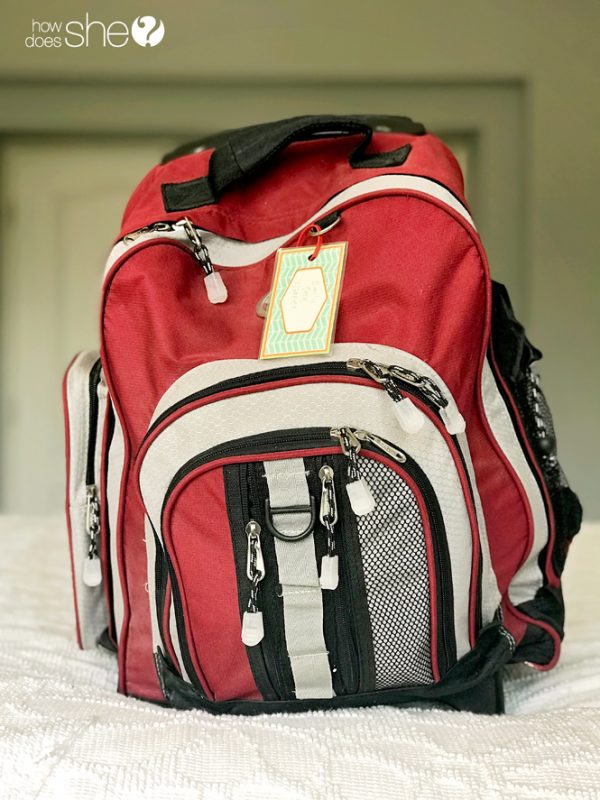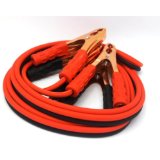
I get asked a lot of questions about emergency preparedness. Recently, a reader left this comment on my blog asking for advice:
“I have a friend who lives in California with her husband and four children. I ask her time and again if she will get an earthquake kit. Her reply is that the government with take care of them. How do you get through to stubborn people?”
I have about a thousand thoughts on that subject, but here is the main one: You don’t. If I’ve learned one thing in my almost 40 years on this earth it’s that you can’t teach someone who doesn’t want to learn. And you can’t convince someone with a closed mind.
This friend has her mind made up, and it’s likely nothing you or I can ever say will change it.
My next thought; “I hope she doesn’t have to learn the hard way how silly that thinking is.”
Here’s the deal, if you’ve ever in your entire life turned on the news after a major natural disaster, you know that the government is, in fact, probably trying to help. (At least in the U.S. and Japan.)
However, if you’ve watched the news for longer than five minutes, you’ve probably noticed that THE GOVERNMENT CAN’T ALWAYS HELP IN AN EMERGENCY! At least not immediately. That’s where emergency preparedness comes in.
Remember Katrina?
Early in the morning on August 29th, 2005, Hurricane Katrina hit the gulf coast lashing it with winds up to 140 miles an hour. Levees broke, there was massive flooding, and people were MAD that the government wasn’t acting quickly enough or helping enough. Hundreds of thousands of people were displaced, and experts estimate that Katrina caused more than $100 billion in damage.
People were warned the night before to evacuate but many did not have cars. Around 10,000 people ended up in the Superdome while thousands opted to shelter in place. As more levees were breached and flood waters rose, the Coast Guard heroically saved 34,000 people. However, there just was not enough help or resources to go around.
Do you remember the news coverage? As more and more people tried to flee, the Superdome reached capacity and locked its doors leaving everyone outside with no resources. I remember reports that toilets were broken and overflowing. All supplies ran low and people felt trapped inside. It was a complete and utter nightmare. Outside, there was massive looting. People were stranded on rooftops waiting to be rescued and had no food or water as the toxic flood waters rose.
Now imagine if every single person, or even 50% of those people had had a 72-hour kit. Things could have looked much, much differently.

I am not blaming any of those people for what happened to them. It was a horrible act of nature made worse by poor local infrastructure–neither of which those people could control.
But that’s kinda the point. Since there is so much we can NOT control, it behooves us to prepare in whatever way we can. The whole point of the 72-hour kit is that it helps you survive for the first three days until help arrives.
This starts with buying and having on hand, a basic 72-hour kit.
Once you have the basics, you can add to your stash.
It’s been a few years since my husband Doug and I have made any significant updates to our stock of survival gear, and it had been at least a year since we rotated the food and clothes in our 72-hour-kits. (The food bricks last a long time, the snack-y stuff needs to be rotated.) With fires breaking out all over California, some within 40 miles of us, it seemed like a great time to swap out old food for new.
We are now to the point we have everything we need and even some luxury items.
Some of those “luxury” items aren’t actually all that fancy.
We have:
- Snack food and candy in addition to emergency protein bars,
- Mountain Home Just-add-Water Meals,
- *Card games and small toys and comfort items for kids,
- A spare set of clothes for each person, (Sweats from Walmart)
- Plus a few high tech gadgets like a solar phone charger.

If we have to shelter in place, we can survive with enough food and water for a loooong time. If we have to evacuate, we have enough food and shelter and water and warmth for 72 hours for all seven of us. Plus some.
We didn’t buy everything all at once. But we started with a basic kit for the four (at the time) members of our family, and built from there.
I KNOW this is not what most people want to spend money on–something you will stick in a closet and may never need. But I am here to tell you that preparedness FEELS GOOD! It alleviates stress and anxiety, is calming, and is proactive! And it is something we can all accomplish if we want to!!
Remember: “If ye are prepared, ye shall not fear.”
Sincerely,
Emily
P.S. Right after Harvey I checked on my friend Kellie who lives just outside of Houston. I asked if she had any advice to pass on. She said: “We didn’t need to evacuate but were stuck at home for multiple days in a row with 7 kids… separate from the 72 hour kits, have a rubbermaid filled with glow sticks, Play-doh, a few new games or craft items. I thought about it and purchased them a few days before the storm hit and I am soooo glad I did, seriously saved our week. I am now thinking about setting aside a permanent “emergency fun kit”
So so smart! SHE WAS PREPARED!!! It was a rotten situation but I can guarantee her preparedness made it easier! Great job Kellie! Each of my 72-hour kits have a different card game in them–I’m thinking I need to add a few more comfort items!
Why I’m passionate about preparedness: Surviving the Earthquake in Japan
We have every reason to be optimistic in this world. Tragedy is around, yes. Problems everywhere, yes. But … you can’t, you don’t, build out of pessimism or cynicism. You look with optimism, work with faith, and things happen.
— Gordon B. Hinckley
For more tips on becoming prepared for an emergency – check these ideas out:
Quick and Easy Emergency Preparedness Ideas

13+ MUST HAVE items to keep in your car at all times

Be Prepared – For Anything! 10 must needed items!

The post Emergency Preparedness: Why Bother? appeared first on How Does She.
by Emily Warner via Home And Garden

No comments:
Post a Comment